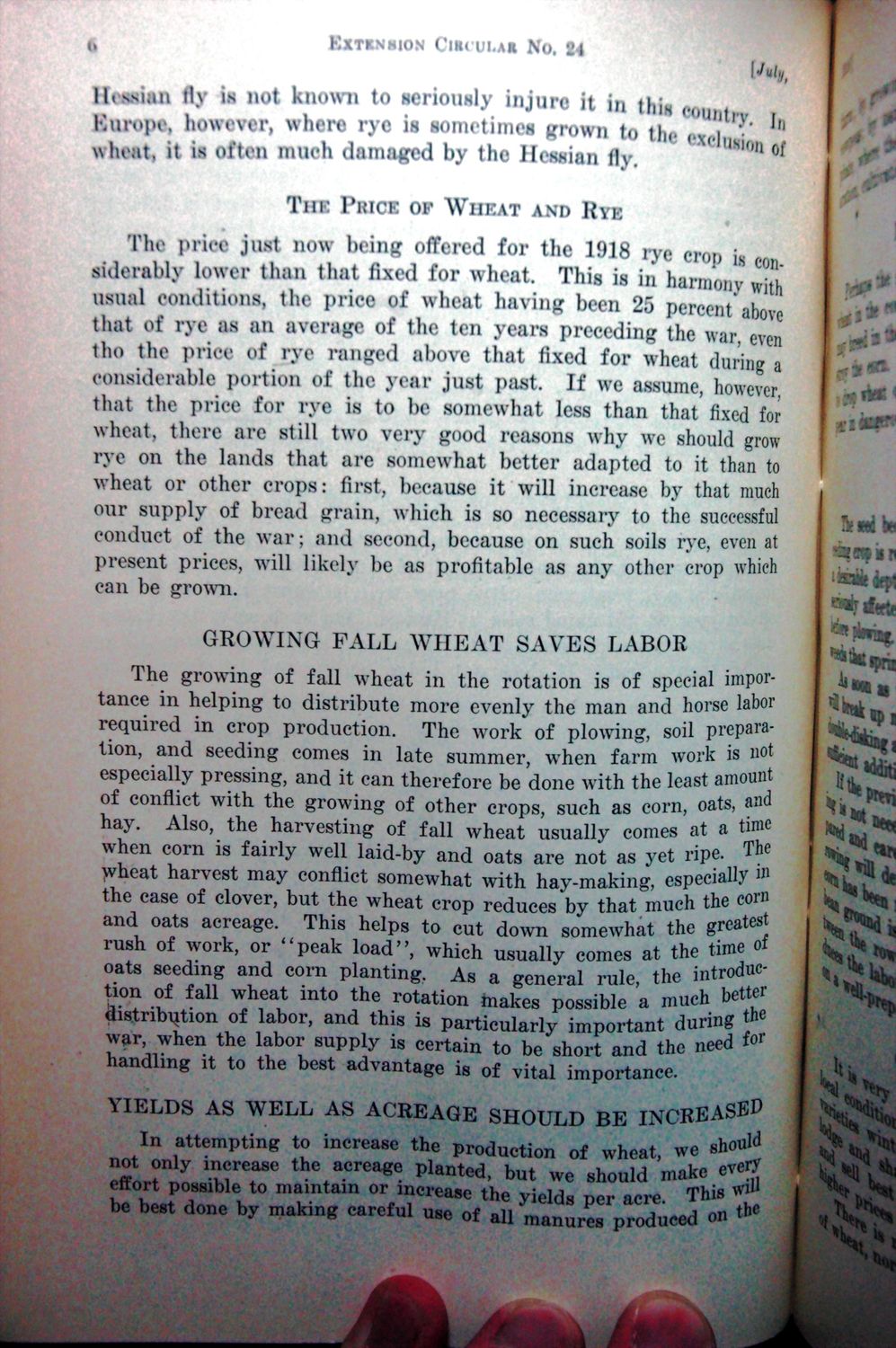| |
| |
Caption: War Publications - WWI Compilation 1923 - Article 30
This is a reduced-resolution page image for fast online browsing.

EXTRACTED TEXT FROM PAGE:
t» ClftC'UI.Aft \Julu is not known to seriously injuro it ever, where -„_ .is, sometimes giuirii in __, , „ rye . „ « grown wheat, it is oi't.n much damaged by the Hessian ilv r n I|H. ,.v,.|. • ! . , ' " of Tun PRICK or WHEAT AND KYI The • j»- >v« ,)<»•»» u v n u v r n g U U C J C U XU1' IIIO 1 9 1 0 r y e Cl'it) is Win. siderably lower than that fixed for wheat. This is in harm on v with usual conditions, the price of wheat having been 25 percent above that of rye as an average of Ihe ten years preceding the war, even tho the price of rye ranged above that fixed for wheat during a considerable portion of the year just past. Jf we assume, however, that the price for rye is to be somewhat less than that fixed for wheat, there arc still two very good reasons why wc should grow rye on the lands that arc somewhat better adapted to it than to wheat or other crops: first, because it will increase by that much our supply of bread grain, which is so necessary to the successful conduct of the war; and second, because on such soils rye, even at present prices, will likely be as profitable as any other crop which can be grown. GROWING PALL WHEAT SAVES LABOR The growing of fall wheat in the rotation is of special importance in helping to distribute more evenly the man and horse labor required in crop production. The work of plowing, soil preparation, and seeding comes in late summer, when farm work is not especially pressing, and it can therefore be done with the least amount of conflict with the growing of other crops, such as corn, oats, and hay. Also, the harvesting of fall wheat usually comes at a time when corn is fairly well laid-by and oats are not as yet ripe. The wheat harvest may conflict somewhat with hay-making, especially w the case of clover, but the wheat crop reduces by that much the corn and oats acreage. This helps to cut down somewhat the greatest rush of work, or '' peak load'', which usually comes at the time of oats seeding and corn planting. As a general rule, the introduction of fall wheat into the rotation makes possible a much better distribution of labor, and this is particularly important during the War. WhPn t h a a Vint* o n n n K r 4~ -. • . "_ - ., A fnf handling WELL In attempting to increase the production of wheat, we should Y , re e t h < a c r e a e la TJ -M f \ * P *t<*l, but we should make every u eftort possible to maintain or increase the yields ner acre This *> be best done by making careful use of all Manure!i produced on the I
| |